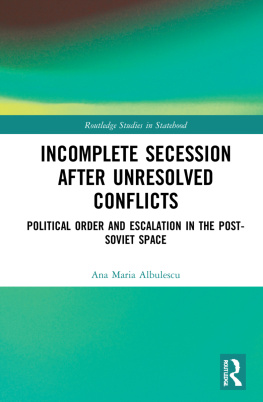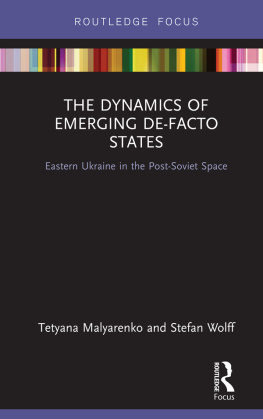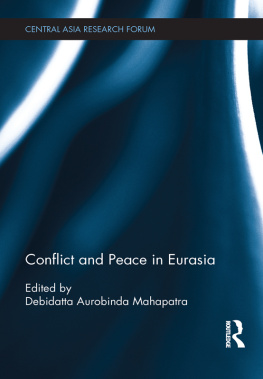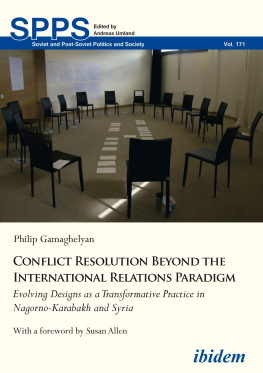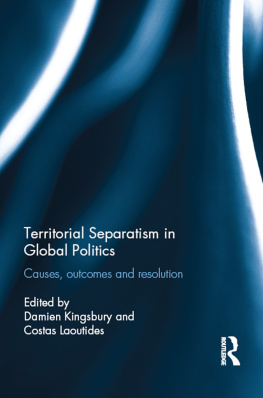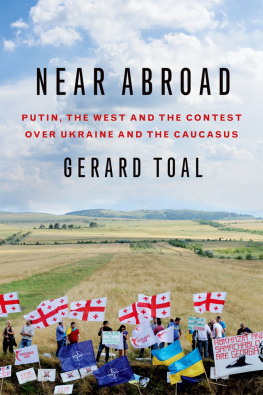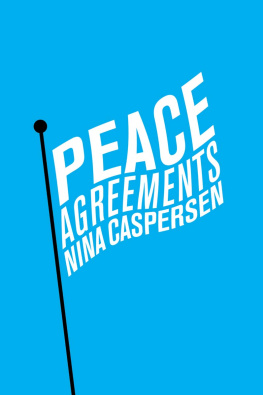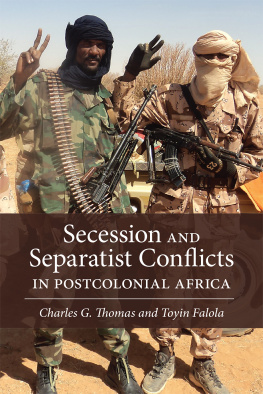Power and Conflict in Russias Borderlands
Power and Conflict in Russias Borderlands
The Post-Soviet Geopolitics of Dispute Resolution
Helena Rytvuori-Apunen
For Osmo
The present book was started in the context of the research project Proactive Conflict Management at Post-Soviet Deep Borders, funded by the Academy of Finland at the University of Tampere (201216). This financial support has enabled the long-term focus required by the subject at hand. I deeply appreciate the institutional support of the Faculty of Social Sciences at the University of Tampere and thank the Facultys service staff and my colleagues at the Tampere Peace Research Institute (TAPRI) for providing an excellent environment for my work. I owe my gratitude to colleagues whose work contributed to this research project: Vadim Romashov, Helle Palu and Andrei Roumiantsev at the University of Tampere for their assistance over many years, and Michael Roush, Diia Gvazava, Marikki Rieppola and Joshua Rose at the same university for their assistance in gathering data during the various phases of my research, as well as Ilkka Janatuinen for the digital illustrations. Steven Parham did the language-editing, and his critical eye was invaluable in finalizing the different chapters. I am also thankful for the support and constructive criticism of Tomasz Hoskins and Tom Stottor at I.B. Tauris, and I am honoured to have this opportunity to contribute to this publishers tradition of promoting the study of Russia and the former Soviet Union. Nayiri Kendirs kind assistance and the concluding steps with David Campbell further contributed to the pleasure of working with I.B. Tauris/Bloomsbury. I also owe my gratitude to two anonymous external reviewers for their comments and advice in processing the manuscript. Besides the students at my home university, the University of Tampere, I am thankful for the immediate resonance provided by students at the Moldova State University and the Yerevan State University in regard to my work. My family, the entire generational lineage from my parents Irene and Matti Juhani to my daughter Natalia and son-in-law Tapio, has made me aware of how fortunate I am to have a home that supports my explorations. I dedicate this book to my husband Osmo, whose knowledge and understanding of the historical subtleties of FinnishRussian relations have so often inspired my reflections about the borders discussed in this book. This work has been written for all those who wish to learn about the complexities of world politics and the processes that underlie post-Soviet conflicts and the efforts to resolve them.
This book makes extensive use of Russian-language sources. In transliterating the Cyrillic to the Latin script it uses common journalistic practice for well-known names of persons and places, but otherwise follows the Library of Congress system without diacritical signs other than the Russian-language soft and hard signs, which are marked, respectively, with and .
Argument for the study of frozen conflicts and Russias borders
Often, Russias security interests are left aside when the post-Soviet frozen conflicts in Abkhazia, South Ossetia, Transnistria and Nagorno-Karabakh are discussed as resolution processes in peace expert communities. And all too often, the attention given to Russias security interests in these conflicts in discussions of its foreign and security policy does not go beyond a common emphasis on geopolitical conflict with the United States and NATO. The aim of this book is to present a wider and sharper perspective by examining how borders understood here not only as linear but also zonal in nature come into being through Russias policies and action in these conflicts, and how these processes take place in interplay with its security interests and its relation to the normative international community. It asks how such zonal borders, which will be called deep borders, come into being with a variety of policy arrangements both formal-institutional and non-formal and habitual and in which different ways the legitimacy of this action is argued in Russias official international communication and domestic discussions. Deep borders set our eyes on the complexity of a variety of Russias border-making processes which cannot but elude us should we remain focused merely on the borderlines between states. They are deep because they use the historical dividing lines in the frozen conflicts in the construction of zonal borders and, consequently, affect these countries entire society. They create borders because they extend and consolidate the geographic area in which Russia can develop its presence in multiple ways militarily, politically, economically and culturally that serve its policies within the wider regions of these conflicts. Deep borders are not by any means specific to Russia. However, Russia has a history and a tradition that makes them a prevalent feature in its practices and, moreover, aligns it on a collision course with the international normative community. Because the idea of a modern state with linear borders applies only superficially to Russia, using this perspective for the criticism of Russia also must remain superficial: it misses the core point about Russia itself. This argument is not merely about gaining a wider perspective of understanding; it is also about not missing the opportunities to solve conflicts with Russia and about acquiring the ability to take up proactive action in their prevention.
Abkhazia, South Ossetia, Transnistria and Nagorno-Karabakh are geographically small conflict spots left behind by the dissolution of the Soviet Union, which was a remarkably peaceful process when we consider the size of the territory and the large number of nationalities involved. In addition to these conflicts, the civil war in Tajikistan (19927) and the Chechen wars (19946 and 19992000), in which the active insurgency phase continued until 2009, were major violent struggles related to this process. Whilst the frozen conflicts of the 1990s could be considered as remnants of the Soviet era, the deteriorating relations between Russia and the West, and especially the conflict which flared up in Ukraine in spring 2014, imbued them with new meaning: they became sensors and indicators of Russias intentions and strategies not only in post-Soviet regions but in world politics in general. The war in Ukraine, a larger country by far than any of the older conflict areas and strategically situated on the Black Sea, boosted interpretations among Western observers that Russia was trying to usher in yet another, protracted frozen-conflict situation and this time in outright rejection of international norms. Russias annexation of the Crimea in March 2014 as well as its continued support of the separatists of Donbass (Donetskii bassein, the basin of the Don River) in eastern Ukraine was argued to provide evidence of such intentions, and innumerable studies were conducted that focused on questions over the Kremlins strategy and the intentions of President Vladimir Putin.
The study in the present book grows out of an intellectual tiredness with the hasty conclusions that so often accompany observations of Russian policies. To know the workings of other peoples minds shall always remain a complex task of interpretation. Unfortunately, the shortcut of reasoning that has often been taken by policy analysts in Western think tanks is to presuppose intention by using rough historical analogies in order to construct continuity between past events and the future. The Russo-Georgian war in August 2008 stirred up Cold War-style interpretations by arguing Russias expansionist geopolitical and neo-imperialist motives; and the annexation of the Crimea five and a half years later was seen to reconfirm these ideas. The argument that also often appears is that Russia uses proxy conflicts to project its great-power aspirations, in other words that the pursuit of power in relation to other major powers constitutes the main driving force of its actions. Such assumptions typically underlie the arguments which stress that the Western This pattern is not a regularity of behaviour. Instead, it tells about the way in which Russias policies and action in the frozen conflicts are being patterned with some basic courses of action which vary in the interactive policy processes of the spatial geographic and temporal contexts of the different conflicts. This book traces these courses of action by using a variety of source materials, including official policy documents and news data from the Russian Federation as well as the states and regions directly involved in the conflicts. The period under consideration covers the entire post-Soviet era, from the years of the gradual dissolution of the Soviet Union in the late 1980s until the summer of 2018. Additionally, the discussion of the various conflicts includes excursions to explore their roots and background during the Soviet decades and, where pertinent, even earlier.


